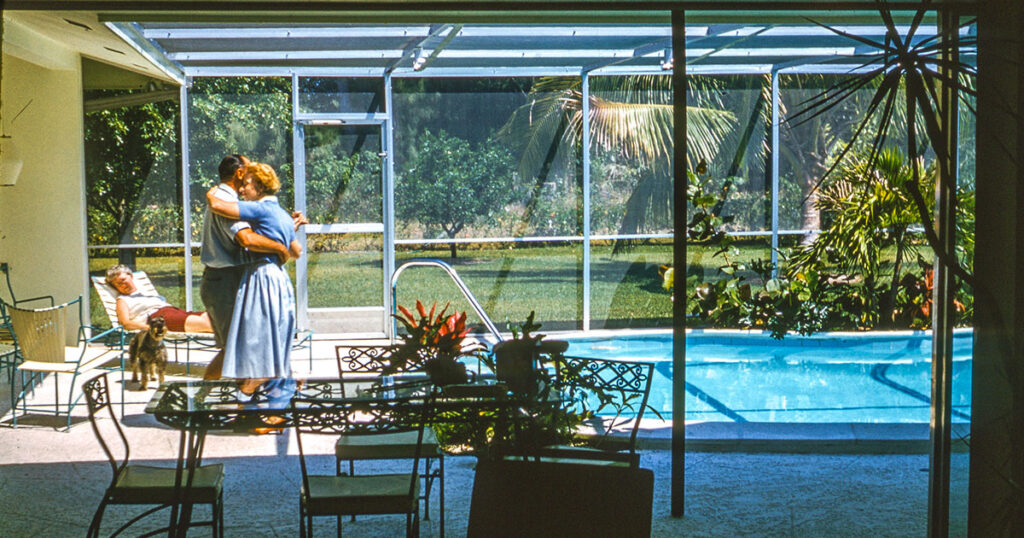
In my experience the spider is the smallest creature whose gaze can be felt.
—Iris Murdoch, Under the Net, 1954
Water came to rebuke the too clear water.
One drop fell from a fern, and lo, a ripple
Shook whatever it was lay there at bottom,
Blurred it, blotted it out. What was that whiteness?
Truth? A pebble of quartz? For once, then, something.
—Robert Frost, “For Once, Then, Something,” New Hampshire, 1923
True mental health consists in a perfect recollection of the past.
—Arthur Schopenhauer, “On Madness,” The World as Will and Representation, 1844
If you have machines that control the planet, and they are interested in doing a lot of computation and they want to scale up their computing infrastructure, it’s natural that they would want to use our land for that. If we protest too much, then we become a pest and a nuisance to them. They might want to rearrange the biosphere to do something else with those atoms—and if that is not compatible with human life, well, tough luck for us, in the same way that we say tough luck for the orangutans in Borneo.
—Max Tegmark, The Guardian, July 7, 2023
The subjunctive mood is in its death throes, and the best thing to do is to put it out of its misery as soon as possible.
—W. Somerset Maugham, A Writer’s Notebook, 1949
New ideas must use old buildings.
—Jane Jacobs, The Death and Life of Great American Cities, 1961
You turn the kitchen
tap’s metallic stream
into tropical drink,
extra sugar whirlpooling
to the pitcher-bottom
like gypsum sand.
Purplesaurus Rex, Roarin’
Rock-a-Dile Red, Ice Blue
Island Twist, Sharkleberry Fin …
When toddlers swallow you,
their top lips mustache in color
as if they’ve kissed paint.
—Marcus Jackson, “Ode to Kool-Aid,” Neighborhood Register, 2011
Just ninety minutes’ drive from where I live in Brisbane you can reach a kind of Antarctica—the remnant relatives of the forest system that covered the ancient landmass of Gondwana, when Antarctica, South America, Australia, the Indian subcontinent and Africa were all joined together more than 180 million years ago. …
Here, like incursions or leftovers from another time or place, are stands of lush Nothofagus moorei, a genus that traces its lineage back to the Nothofagus of Gondwana. These picture-book trees, with their thick and complex root buttresses, often coated with thick green furry moss, are starkly different to the shapes and colours of more common eucalypt forest. Even the air around them has a different weight and coolness and sound.
—Ashley Hay, “Between different worlds,” Griffith Review 77, May 2022
caliban lies face down on a cot in a 6 × 9 × 12 jail cell
he writes a letter to his mother, sycorax
[caliban:]
some days raft
some days tire
some days sea ocean wrath
some days shore
some days coffin
some days van
some days la bestia
some days coyote
some days border patrol
some days militia
some days ditch
some days dry white bones in sand
—Roberto Carlos Garcia, Tempest, 2024
I see again my schoolroom in Vyra, the blue roses of the wallpaper, the open window. Its reflection fills the oval mirror above the leathern couch where my uncle sits, gloating over a tattered book. A sense of security, of well-being, of summer warmth pervades my memory. That robust reality makes a ghost of the present. The mirror brims with brightness; a bumblebee has entered the room and bumps against the ceiling. Everything is as it should be, nothing will ever change, nobody will ever die.
—Vladimir Nabokov, Speak, Memory, 1947
The fact is a wire through which one sends a current. The voltage of that current is determined by the writer’s own belief as to what matters, by his own caring or not-caring, by passionate choice.
—Saul Bellow, in Zachary Leader, The Life of Saul Bellow, 2015
Glooming in print about the dire fate of the Sox and their oppressed devotees has become such a popular art form that it verges on a new Hellenistic age of mannered excess. Everyone east of the Hudson with a Selectric or a word processor has had his or her say, it seems. … [And] one begins to see at last that the true function of the Red Sox may not be to win but to provide New England authors with a theme, now that guilt and whaling have gone out of style.
—Roger Angell, The New Yorker, December 8, 1986
The dating of the Formby footprints was achieved by means of a technique known as optically stimulated luminescence. OSL relies on the chronometric abilities of quartz granules. If kept in darkness—if buried in mud, for instance—quartz steadily attracts electrons to itself. Quartz samples are obtained from the site to be dated; they are kept unpolluted by the light and are taken to a laboratory, where they are irradiated by a neon beam. The neon causes the quartz to discharge its hoarded electrons, and the measured rate and quantity of electron discharge gives a reliable indication of the length of time the quartz has been in darkness. A final trail of white stones, marking time, showing the way back. …
I stop by the last footprint, 5,000 years after setting out, my track ceasing where his does.
—Robert Macfarlane, The Old Ways: A Journey On Foot, 2012
Should Gold wed Dung, should Stars Wooe Lobster Claws,
It would no wonder, like this Wonder, cause.
—Edward Taylor, Preparatory Meditations, 1682–1724

